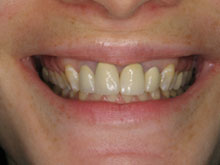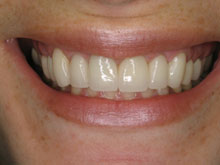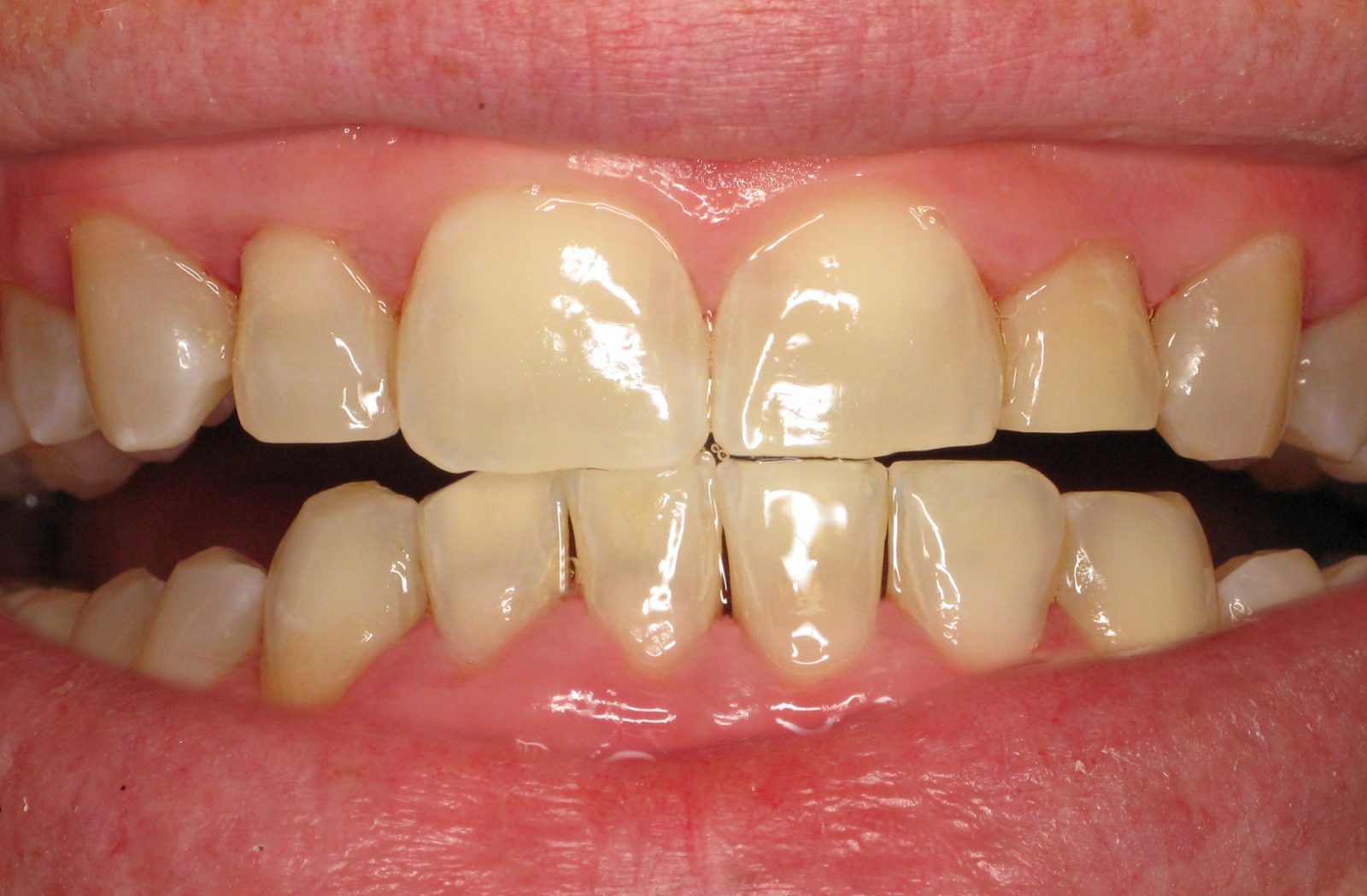How Do You Treat Redness in Gum Disease?

Addressing redness in gum disease requires a targeted and comprehensive approach to restore optimal gum health. Redness, a common symptom of gum disease, often indicates inflammation and irritation of the gum tissues. Effective treatment involves a combination of professional interventions and diligent at-home care. Dental professionals employ various techniques, such as laser periodontal therapy, scaling and root planing, and personalized oral care plans, to manage redness and halt the progression of gum disease.
At Laser Periodontics & Gum Surgery, our specialized team focuses on tailored treatments designed to alleviate redness, reduce inflammation, and promote overall gum health. This holistic approach addresses the root causes of gum disease and provides patients with the tools and strategies needed to maintain a healthy smile. Regular dental check-ups are crucial in monitoring redness and ensuring timely intervention, preserving optimal oral well-being in the long run. For a comprehensive consultation, call (877) 440-3564.
What procedures are involved in professional dental cleanings to address gum redness?
Professional dental cleanings are crucial in addressing gum redness and maintaining optimal oral health. The procedures involved in these cleanings are designed to remove plaque and tartar, reducing inflammation and preventing the progression of gum disease. The dental cleaning process typically includes the following key steps:
Scaling: Dental professionals use special instruments to remove plaque and tartar from the tooth surfaces, including below the gumline—this process, known as scaling, targets areas difficult to reach with regular brushing and flossing.
Root Planing: Root planing involves smoothing the tooth roots to eliminate rough areas where bacteria may accumulate – this procedure helps prevent bacteria reattachment and promotes gum tissue healing.
Polishing: After scaling and root planing, the teeth are polished to remove surface stains and create a smoother tooth surface. This step also helps discourage the accumulation of plaque and bacteria.
Fluoride Treatment: A fluoride treatment may sometimes be applied to strengthen the teeth and prevent tooth decay. This is especially beneficial for individuals with heightened susceptibility to cavities.
These professional dental cleaning procedures are tailored to address gum redness and contribute to overall gum health. Regular dental cleanings recommended every six months, are essential for preventing the progression of gum disease and maintaining a healthy smile. For individuals experiencing gum redness, these cleanings provide a foundation for optimal oral care and may be complemented by additional treatments like laser periodontal therapy for more advanced cases. Seeking professional dental care is vital to receive personalized guidance and ensure the most effective approach to address gum redness and promote long-term oral well-being.
How do scaling and root planing effectively remove plaque and tartar buildup causing redness?
Scaling and root planing are effective dental procedures designed to remove plaque and tartar buildup, addressing the underlying causes of redness in the gums associated with gum disease. These treatments are crucial for promoting gum health and preventing the progression of more severe periodontal conditions. Here’s how scaling and root planing work to eliminate plaque and tartar:
- Scaling: This procedure involves carefully removing plaque and tartar from the surfaces of the teeth, both above and below the gum line. Dental professionals use specialized instruments, such as ultrasonic and hand scalers, to gently scale away the accumulated deposits. Scaling focuses on eliminating the bacterial biofilm responsible for gum inflammation and redness.
- Root Planing: Root planing targets the tooth roots below the gumline after scaling. Dental professionals smooth the roots’ surfaces to remove any remaining bacteria and toxins. This process helps prevent the reattachment of plaque and tartar, creating a clean and smooth surface that encourages the healing of gum tissues.
By effectively removing plaque and tartar, scaling and root planing reduce the bacterial load that triggers inflammation and redness in the gums. These procedures aim to create an environment where the gums can heal and reattach to the teeth more securely.
Additionally, the elimination of bacterial deposits during scaling and root planing helps to prevent the progression of gum disease. Reducing inflammation and promoting healthier gums contribute to an improved overall oral environment. Patients may experience reduced redness, swelling, and tenderness, enhancing gum health.
For individuals with gum redness or signs of early gum disease, scaling and root planing are crucial components of a comprehensive treatment plan. Regular dental check-ups and professional cleanings, along with good oral hygiene practices at home, play an essential role in maintaining the results of scaling and root planing and preventing the recurrence of gum issues. Seeking professional dental care ensures personalized guidance and effective management of gum redness and associated symptoms.
What role do antibacterial mouthwash or oral rinses play in reducing gum redness?
Antibacterial mouthwash or oral rinses can play a supportive role in reducing gum redness by targeting bacteria that contribute to gum inflammation and gum disease. These oral rinses contain antimicrobial agents that help control bacterial growth in the mouth, reducing plaque buildup and the risk of gum infections.
Here’s how antibacterial mouthwash contributes to minimizing gum redness:
- Reducing Bacterial Load: Antibacterial mouthwashes contain active ingredients, such as chlorhexidine, cetylpyridinium chloride, or essential oils, which have antimicrobial properties. These agents help kill or inhibit bacteria growth in the oral cavity when used as directed. By reducing the number of harmful bacteria, these rinses help control the progression of gum disease, minimizing redness and inflammation.
- Supplementing Oral Hygiene: While not a substitute for regular brushing and flossing, antibacterial mouthwashes can complement oral hygiene practices. They reach areas that may be difficult to clean with a toothbrush or floss, effectively targeting bacteria between teeth and the gumline.
- Aiding Healing: In cases where scaling and root planing or other dental treatments have been performed to address gum redness, using an antibacterial mouthwash as part of post-treatment care can support healing by keeping bacterial levels in check and reducing the risk of reinfection.
However, it’s essential to use antibacterial mouthwashes as directed by dental professionals. Prolonged or improper use may disrupt the balance of oral microorganisms, potentially leading to side effects such as staining of teeth or changes in taste sensation.
While antibacterial mouthwash can be beneficial in reducing gum redness and controlling gum disease, it is not a standalone solution. Proper oral hygiene practices, including regular brushing, flossing, and routine dental check-ups, remain fundamental for optimal gum health. Consulting with a dentist or periodontist helps determine the most suitable oral care routine, including using antibacterial mouthwash to manage gum redness effectively and promote overall oral wellness.
Are there specific circumstances where anti-inflammatory medications are necessary to treat redness?

Anti-inflammatory medications may be necessary in specific circumstances to treat redness associated with gum disease, particularly when the inflammation is severe or doesn’t respond adequately to standard treatments. Conditions like gingivitis or periodontitis, marked by gum redness, swelling, and tenderness, may benefit from using anti-inflammatory drugs to manage symptoms and aid healing.
There are instances where dental professionals may recommend anti-inflammatory medications, such as nonsteroidal anti-inflammatory drugs (NSAIDs) like ibuprofen, to alleviate discomfort and reduce inflammation in the gums. These medications help suppress the body’s inflammatory response, relieving pain and swelling associated with gum disease.
Furthermore, a dentist or periodontist may prescribe specific anti-inflammatory oral rinses or gels containing corticosteroids in cases of acute or advanced gum disease characterized by significant redness and inflammation. These formulations are designed to be applied directly to the affected gums to reduce inflammation and promote healing.
It’s important to note that while anti-inflammatory medications can offer symptomatic relief and aid in managing redness and swelling, they are typically used as adjunctive therapy alongside professional dental treatments and good oral hygiene practices. These medications are prescribed on a case-by-case basis, and a dental professional should determine the dosage and duration of use.
Patients should follow their dentist’s recommendations strictly when using anti-inflammatory medications, as prolonged or improper use may have adverse effects. Regular dental check-ups and professional cleanings remain essential for monitoring gum health and ensuring appropriate treatment approaches for managing redness associated with gum disease. Consulting with a dental professional is crucial to determine the necessity and suitability of anti-inflammatory medications in addressing gum redness and promoting optimal oral health.
Experienced, professional gum treatment. Offices in New York City, Long Island, Nutley, New Jersey.
Free screening visits will include the following: Oral exam/cancer screening, periodontal evaluation, your possible treatment options, and estimated costs.






